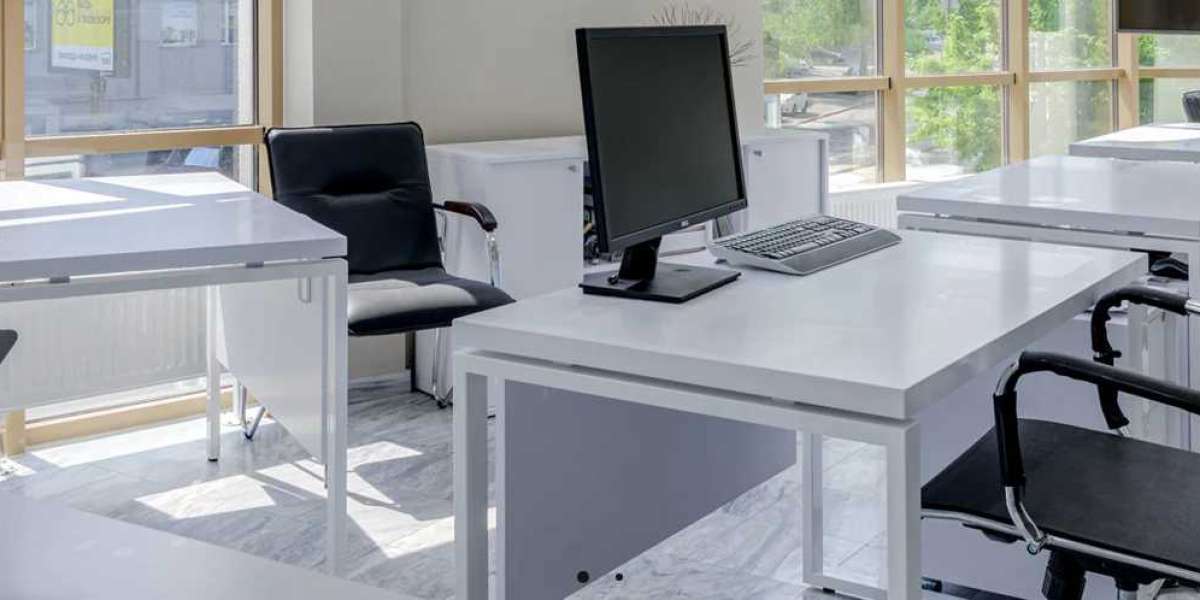Selecting the right office chair is crucial for maintaining comfort and support throughout your workday. An ergonomic chair not only enhances productivity but also reduces the risk of discomfort and injury. Here’s a comprehensive guide to help you choose the perfect office chair:
1. Understand Ergonomic Features
Adjustable Seat Height:
- What It Is: The ability to adjust the height of the chair so that your feet rest flat on the floor and your knees are at a 90-degree angle.
- Why It Matters: Ensures proper posture and reduces strain on your legs and lower back.
Lumbar Support:
- What It Is: A support feature that aligns with the natural curve of your lower back.
- Why It Matters: Provides crucial support for the lower back, preventing strain and discomfort.
Adjustable Backrest:
- What It Is: A backrest that can tilt and lock into different positions.
- Why It Matters: Allows you to find a comfortable position that supports your back and encourages a healthy sitting posture.
Seat Depth and Width Adjustment:
- What It Is: The ability to adjust the depth (distance from the back of the seat to the front) and width of the seat.
- Why It Matters: Ensures that the chair accommodates your body size and provides support without cutting off circulation.
2. Prioritize Comfort
Padding and Upholstery:
- What It Is: The cushioning and material used in the seat and backrest.
- Why It Matters: Adequate padding and breathable upholstery prevent discomfort and heat buildup during long hours of sitting.
Seat Material:
- What It Is: The fabric or material covering the seat, such as mesh, leather, or fabric.
- Why It Matters: Choose a material that balances comfort, durability, and ease of cleaning. Mesh is breathable, while leather offers a more traditional look.
Adjustable Armrests:
- What It Is: Armrests that can be adjusted in height, width, and angle.
- Why It Matters: Provides support for your arms and shoulders, reducing strain and promoting a relaxed sitting posture.
3. Consider Mobility and Stability
Swivel and Casters:
- What It Is: The ability to rotate the chair and move around easily on casters.
- Why It Matters: Enhances mobility, allowing you to reach different areas of your workspace without straining.
Base Stability:
- What It Is: The base of the chair, which should be sturdy and well-balanced.
- Why It Matters: Ensures safety and stability, preventing the chair from tipping over or wobbling.
4. Check for Customization Options
Adjustable Recline:
- What It Is: A mechanism that allows the chair to tilt back and lock into various positions.
- Why It Matters: Provides flexibility to shift between different postures and relax during breaks.
Tilt Tension Control:
- What It Is: A feature that adjusts the resistance of the tilt mechanism.
- Why It Matters: Allows you to set the chair’s tilt resistance to match your preference and weight, ensuring comfortable reclining.
5. Evaluate Durability and Quality
Frame and Build Quality:
- What It Is: The material and construction of the chair’s frame and components.
- Why It Matters: A high-quality frame ensures long-term durability and stability, supporting the chair’s overall function.
Warranty:
- What It Is: The manufacturer’s guarantee regarding the chair’s quality and coverage for repairs or replacements.
- Why It Matters: A good warranty indicates confidence in the chair’s quality and provides protection against defects or issues.
6. Test Before You Buy
Try Out the Chair:
- What It Is: Testing the chair in person if possible.
- Why It Matters: Ensures that the chair fits your body type and comfort preferences. Sit in the chair for a few minutes to gauge how it feels.
Check for Adjustments:
- What It Is: Ensure that all adjustable features are easy to use and function properly.
- Why It Matters: Confirms that you can customize the chair to meet your specific needs and preferences.
7. Consider Aesthetics and Style
Design and Color:
- What It Is: The chair’s appearance and how it complements your office décor.
- Why It Matters: Choosing a chair that fits the overall design of your workspace can enhance the visual appeal and contribute to a cohesive office environment.
Ergonomic Certification:
- What It Is: Look for chairs certified by ergonomic organizations or standards.
- Why It Matters: Indicates that the chair meets specific ergonomic criteria and is designed to promote comfort and support.
Conclusion
Choosing the perfect office chair involves balancing comfort, support, and functionality to enhance your work experience. Look for features such as adjustable height, lumbar support, and comfortable padding, and ensure the chair suits your workspace and personal preferences. Testing the chair and considering its durability and warranty will help ensure that you make a wise investment in your comfort and productivity. With the right office chair, you can create a more enjoyable and supportive work environment.








